Bamboo can serve many purposes in a garden setting. It’s a wonderful ornamental plant with abundant, green leaves and elegant, upright canes. Some types of bamboo make a good ground cover and some timber varieties are great to harvest for their massive poles. There are clumping bamboos that will stay fairly compact, and there are running varieties that can spread quickly. And some might even spread a little too quickly. One of the most popular reasons for planting bamboo is for a hedge or a privacy screen. So what are the best species of bamboo to plant for hedges?
Bamboo can make an excellent hedge or privacy screen with its stately height, dense foliage and fast growth rate. But different species of bamboo have different growth habits. When you select a bamboo species for your hedge, you’ll want to plant something that fills in quickly, has thick leaves, and grows to an appropriate height depending on your privacy needs. In this article, we’ll talk about what characteristics to look for and identify a handful of the best varieties for your bamboo privacy screen.
| Botanical name | Common name | Brief description |
| Arundinaria funghomii | Dense, fast-growing runner, 20-30′ tall, 1″ thick poles | |
| Bambusa malingensis | Seabreeze | Tropical clumper, 30-40′ tall, tolerates wind, salt and drought |
| Bambusa multiplex | Hedge bamboo | tropical clumper, 10-20′ tall, 1-2″ thick |
| Bambusa textilis ‘gracilis’ | Graceful | Tropical, clumping bamboo, 20-30′ tall, 1-1.5″ thick |
| Bashania fargesii | Windbreak | Vigorous runner, 20-25′ tall, 2″ thick |
| Fargesia dracocephala | Dragon head | Cold hardy clumper, 10-15′ tall, 1″ thick |
| Phyllostachys bissetii | Bisset’s | Aggressive running bamboo, 30-40′ tall, 2″ thick |
| Phyllostachys aureosulcata | Spectabilis | Cold hardy runner, 20-25′ tall, 1.5″ thick |
| Phyllostachys bambusoides | Japanese timber | Giant running bamboo, 50-70′ tall, 3-5″ thick |
| Phyllostachys humilis | Cold hardy runner, 15-20′ tall, 1″ thick | |
| Phyllostachys viridis | Robert Young | Beautiful striped bamboo, 30-40′ tall, 3″ thick |
| Pseudosasa Japonica | Arrow bamboo | Elegant runner, big leaves, 15-20′ tall, < 1″ thick |
| Shibataea kumasaca | Ruscus | Shrubby, cold hardy runner, 5-7′ tall, .25″ thick |
NOTE: This article first appeared in August 2020, most recently updated in March 2024.
What to look for in a bamboo hedge or privacy screen
With more than 1,200 species to choose from, selecting the right type of bamboo is not always a simple undertaking. The conscientious gardener will have to evaluate their growing conditions and determine what sort of features they want from their bamboo. Then they have to go through the catalogs and species lists to find a bamboo variety that has all those desirable characteristics. So what are the properties of a good bamboo hedge or screen?
Growth rate
In most cases, when you plant a privacy screen, you want a plant that will grow quickly and fill in the gaps. The longer you have to wait for it to grow, the longer you will have to suffer without privacy. And whether you like to sunbathe au natural in your garden, or just host a lot of backyard barbecues, everyone enjoys a little privacy.
For this reason, many gardeners will prefer faster-growing running varieties of bamboo. Unlike the clumping types of bamboo, running bamboo can spread quickly to fill an area. At the same time, you have to be careful that the running bamboo doesn’t “overrun” your garden. To do this, you’ll want to place some kind of root barrier in the ground to confine the plant to a designated area. Another option is to keep the bamboo in large containers or planter boxes. Either way, containing the roots of the bamboo will make it far easier to keep the plant under control and maintain an attractive, hedge-like shape.
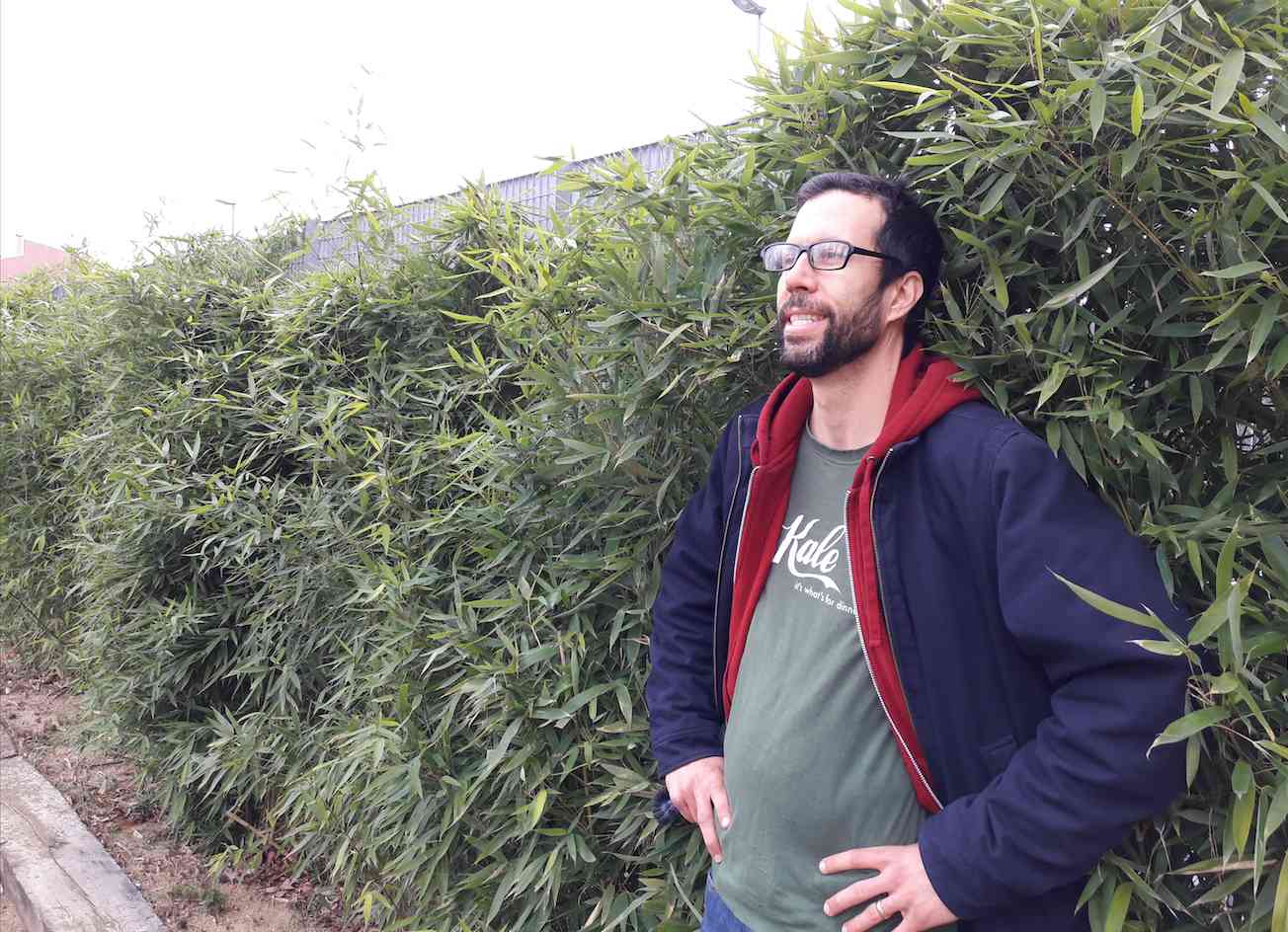
Meanwhile, some gardeners have far greater success by planting a row of clumping bamboos and letting them to fill out. In many cases, clumpers actually make the best privacy screens. In the right climate, they will fill in quickly, but the rhizomes won’t have that annoying tendency to overtake the rest of the garden. In fact, the most popular bamboo hedges, at least in the warmer parts of the country, are clumping varieties like Alphonse Karr and Seabreeze.
Size and shape
Some varieties of bamboo will only grow a few feet tall, and others can easily grow well over 50 feet. There are bamboos that make a nice short hedge along a walkway, and then there are taller bamboos that provide privacy similar to a 6 or 8-foot fence. But if you want privacy all the way up to your second-story bedroom window, there are other options. With bamboo, anything is possible!
The size and shape of the poles is also worth thinking about. For a tall privacy hedge, you’ll probably want a bamboo with straight, upright canes. Certain bamboo varieties have very interesting canes with irregular shapes and uneven patterns, but these are probably less desirable for a hedge. However, if you prune back the foliage on the lower few feet of the bamboo, the irregular culms can add some visual interest to the garden.
You can also choose between slender canes (an inch or less in diameter) and thicker canes (3, 4 or 5 inches in diameter). This will mostly just be a matter of personal preference. Although, if you’re planning a short hedge, just 3 or 4 feet tall, then the very thick poles will not be a practical option.
Foliage
One of the most important features of a good privacy hedge is some thick, dense foliage. Without tightly packed leaves, the bamboo won’t really provide a satisfying level of privacy. It’s also difficult to create a well-defined, carefully-shaped hedge unless the foliage is very dense. Think of the density of a flat, square boxwood hedge, where you can almost set your drink down on the smooth top surface. Your bamboo hedge won’t get that dense, but at least you want it thick enough to keep the light (and the neighbors) from peeking through.
Climate
Finally, whenever you’re selecting a bamboo plant for your garden, you need to be sure it’s suitable for your climate. Some bamboo varieties prefer, or even need, to be in a tropical or subtropical climate. Others can survive, or even thrive, through a snowy New England winter. So always pay attention to the weather requirements before you purchase a bamboo. As a general rule, the running bamboo is a lot more cold-hardy than the clumping.
Best species for bamboo hedges
There are dozens of varieties of bamboo that will work for a hedge or privacy screen, but here’s a partial list including some of the most common and popular choices. If you know of a good bamboo hedge that we overlooked, please let us know in the comments section.
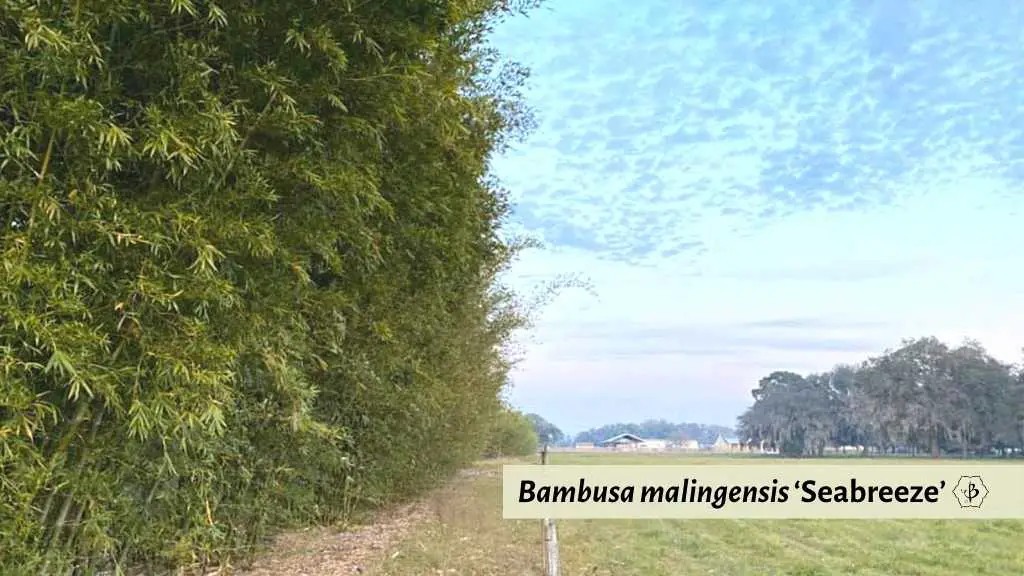
Arundinaria funghomii: Thin, straight canes of this running bamboo grow close together and with lots of leaves, making it an ideal hedge or screen. Native to China, some authors classify this bamboo as Pseudosasa cantorii. Grows 20-30 feet tall with 1 inch culms. Cold hardy down to about 0º F.
Bambusa malingensis ‘Seabreeze’: This popular species from Southern China is great in a variety of conditions. As the name indicates, it’s very tolerant of winds and salty air by the seaside. Its tight clumping habit and lateral branches also make for a dense and especially fast-growing privacy hedge, often growing up to 30 feet tall or more. Seabreeze also happens to be one of the more drought-tolerant bamboo species. But like most varieties of Bambusa, it’s not very cold-hardy. Temperatures below 20º F will usually result in frost damage.

Bambusa multiplex, or Hedge Bamboo: Ideally suited for privacy screens, as the name would suggest with 10-20 foot upright poles. This species has also a number of cultivars, including ‘Golden Goddess’, a very popular ornamental for its manageable size and greater hardiness. They only grow about 10 feet tall, with half-inch culms, cold hardy to 15-20º F. Not to be confused with Phyllostachys aurea, also called Golden Bamboo. Another subspecies, ‘Alphonse Karr’, is among the most highly sought after of all ornamental bamboos. Distinctive green stripes on bright yellow culms give this variety a stunning appearance (see image below). Healthy plants can get 20-30 feet tall, with 1.5-2 inch canes. Tolerates temperates as low as 15-20º F.
Bambusa textilis ‘Gracilis‘: An especially popular and “graceful” variety of clumping bamboo, native to warmer, tropical climates. A compact growth habit gives this bamboo a small footprint and makes it easy to contain. The upright structure is very attractive and its dense vegetation offers great privacy. Best in zone 8 or above.
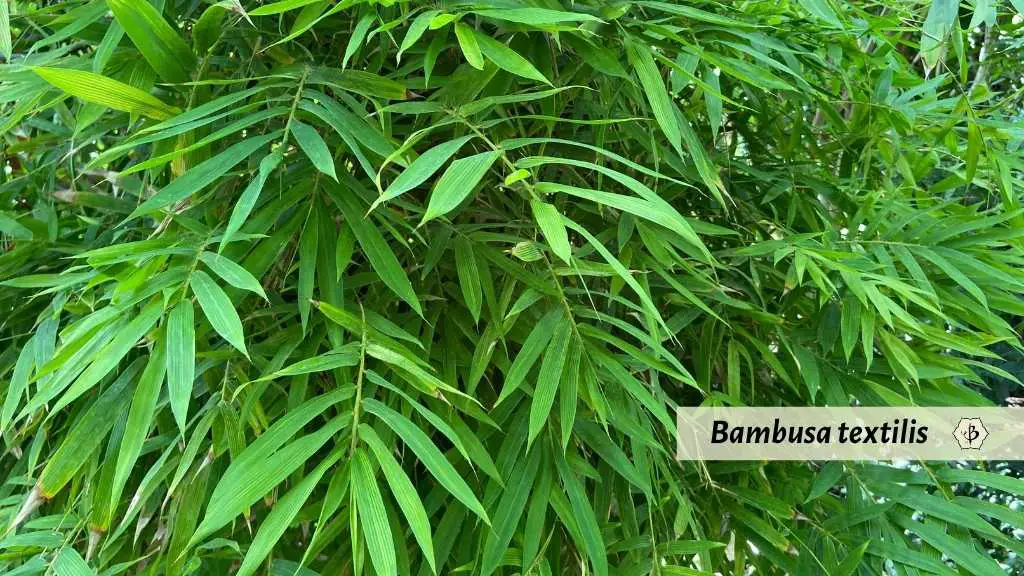
Bashania fargesii: Long, sturdy culms have earned this the name of “Windbreak Bamboo”. Leaves are long and thick, and the culm internodes are unusually long. This cold hardy variety is good in zones 7-10, and gets about 20-25 feet tall, with culms up to 2″ thick. Beware, this species is especially fast-spreading and capable of becoming invasive.
Fargesia dracocephala: “Dragon head bamboo” has thick culms growing to about 10 feet, with a thick, weeping leaf canopy that can provide a good privacy hedge. Not recommended for hot, humid climates, but cold hardy down to -10º F.
Phyllostachys bissetii: A very common variety for privacy screens because it grows so quickly, but be careful, it can also become invasive. Like most members of the genus Phyllostachys, it is a cold hardy runner. This variety can get up to 40′ tall with culms about 2″ in diameter, withstanding freezing temperatures down to -10º F.
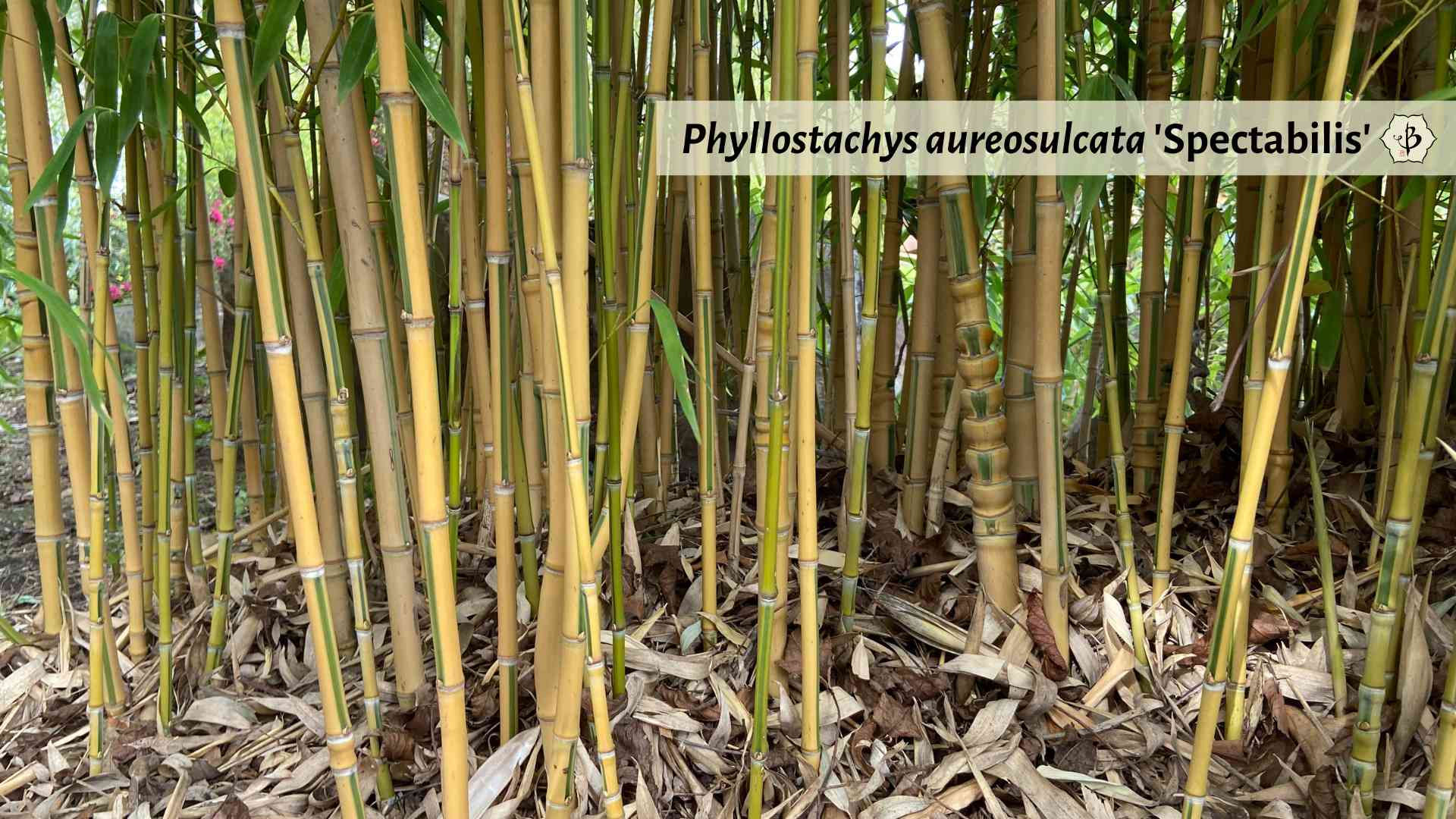
Phyllostachys aureosulcata ‘Spectabilis’: A fast-growing, medium-sized bamboo with some interesting features, including a yellow stripe and occasional zigzags in lower sections of the culms. Grows to about 25′ tall and 1’5″ thick with dense foliage. Cold hardy to around -5º F.
Phyllostachys bambusoides: Giant Japanese timber bamboo, this variety can provide privacy all the way up to the second and third story windows. Smooth, beautiful culms can get 50-70 feet tall, depending on conditions, with a culm diameter of up to 5″. These are running varieties, but not especially aggressive. Cold hardy down to 0º F, but they grow larger in warmer climates.
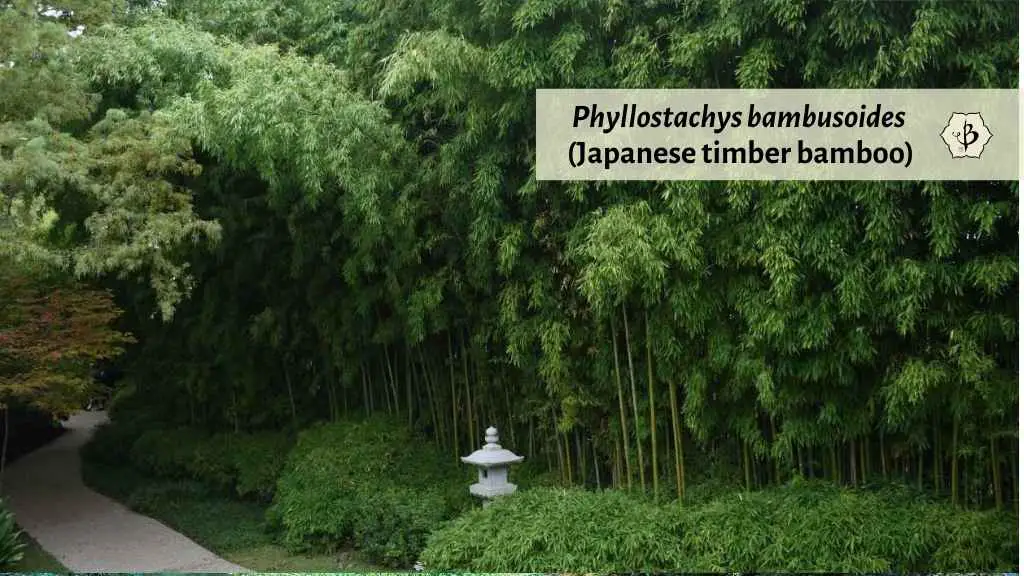
Phyllostachys humilis: A smaller member of the genus Phyllostachys, only growing 10-15 feet tall, depending on the climate, with culms less than 1″ thick. But despite the size, it can spread aggressively, so keep an eye on the roots. With thick, green foliage, this variety is ideal for hedges and shorter privacy screens. Cold hardy down to around 0º F.
Phyllostachys viridis ‘Robert Young’: An exquisitely attractive variety with green and yellow stripes on its poles, this species can also grow to an impressive but manageable size, up to 40 feet tall with culms up to 3″ in diameter. Depending how much privacy you need, you may want to prune back the leaves on the lower portions (bottom 3 or 4 feet) to show off the beautifully variegated canes. Cold hardy down to 5º F.
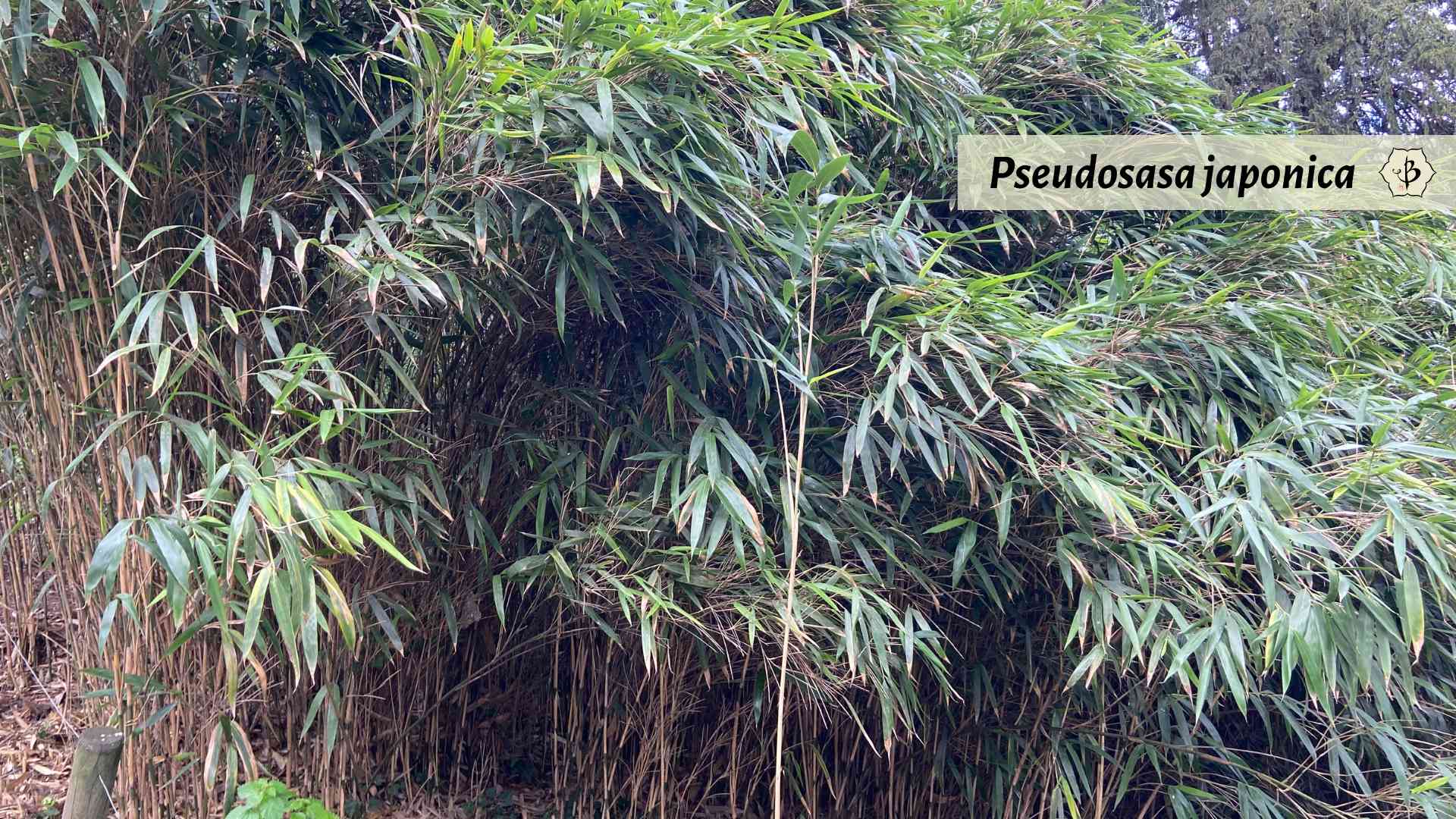
Pseudosasa japonica: Known as “Arrow Bamboo” for its straight and slender culms, it also makes an especially attractive screen, with large, dark green leaves. Ideal for shorter screens and hedges, with canes growing 15-20 feet tall, and less than an inch thick. Spreads rather aggressively and cold hardy to about 5º F.
Shibataea kumasaca: A less common variety, but perfect for low hedges. Foliage — made up of short, stubby leaves — is unusually dense, with pencil-thin culms that only get about 5-7 feet tall. Despite its diminutive size, this species is a runner and may become invasive if not properly contained. Tolerates shady areas and cold hardy down to 5º F.
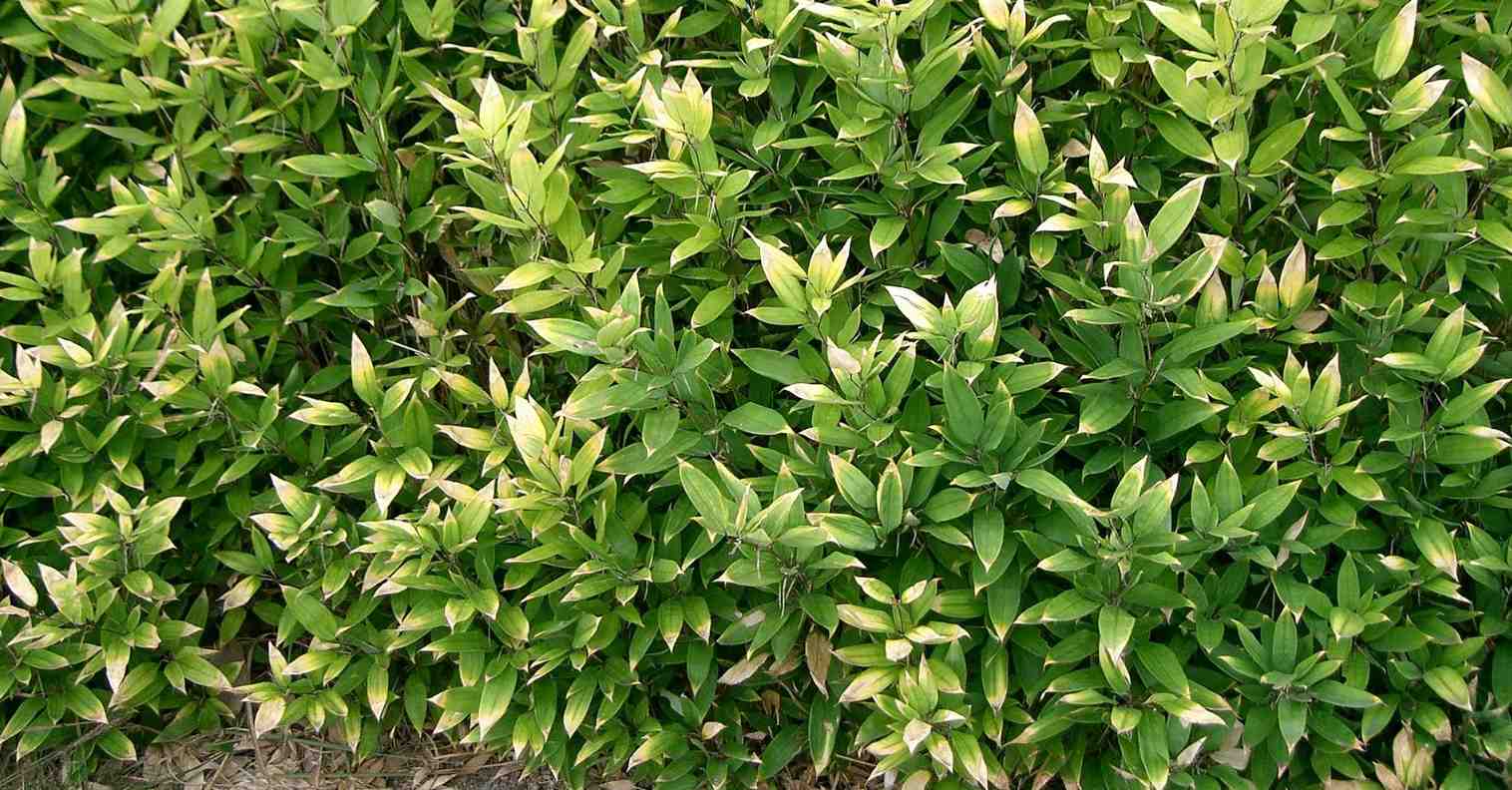
Take a look at my in-depth article on Dwarf Bamboo and Groundcovers to learn about more of these low-growing bamboo species.
Planting your hedge
Two of the most common questions we hear from gardeners are: How much bamboo will I need? And how fast will it grow?
For good coverage and a sufficiently dense hedge that will fill in within a couple years, you’ll want to space plants about two to three feet apart. Smaller plants, in 2-gallon pots, could be a little closer than that. Bigger plants, in 3-gallon pots, can be somewhat more spread out.
The specific growth rate really depends on the species of bamboo and its growing conditions. But as a general rule, it takes a couple of years for a bamboo plant to get really well established. After three years, the roots will have spread out a bit and the new shoots should be close to full size. Shoots that come up in the first two years will grow to be smaller and thinner. You’ll probably want to prune and remove those early shoots after a few years, as the bigger canes start filling in.
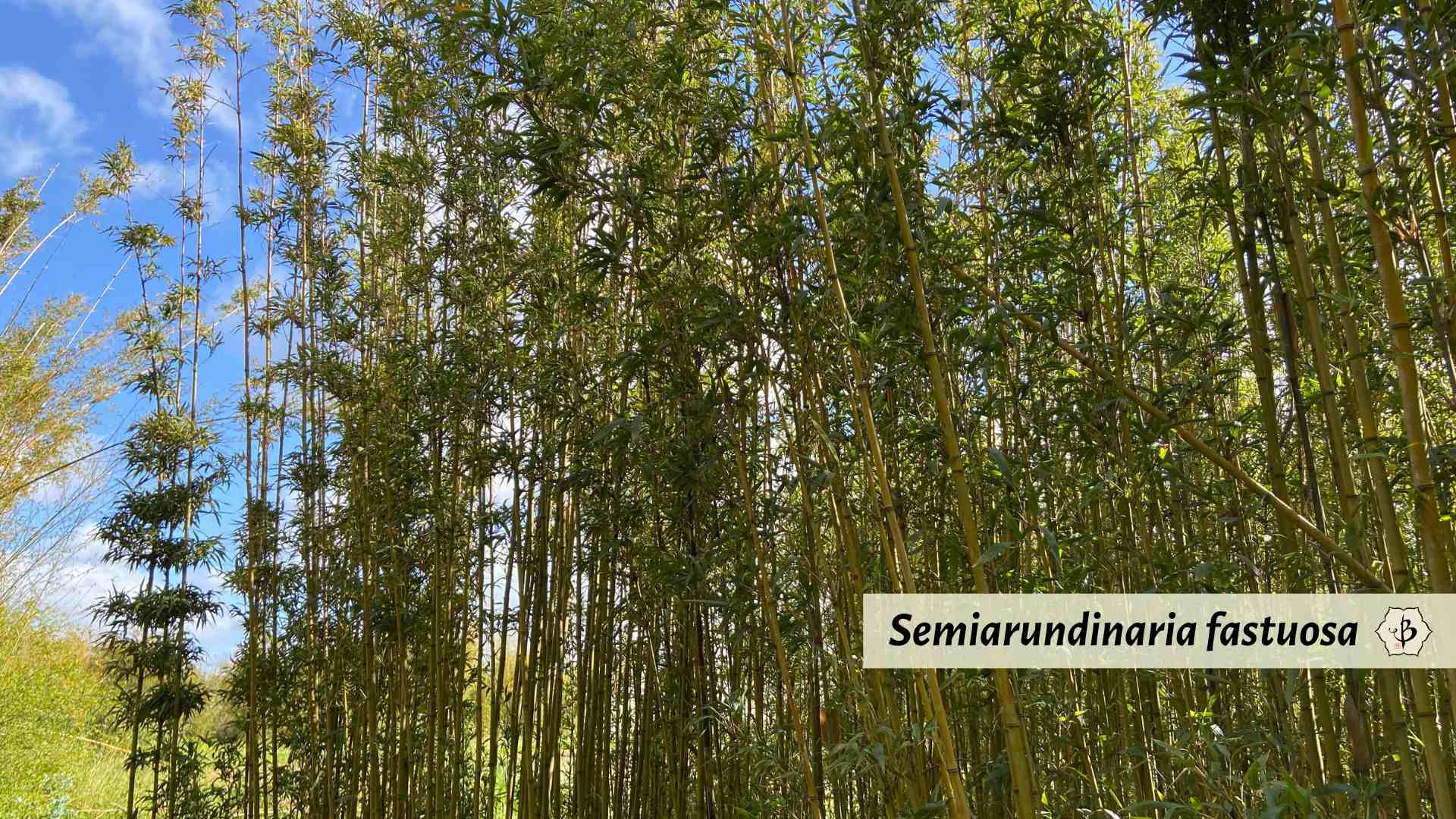
Further reading
If you enjoyed this article about bamboo hedges, please consider sharing the blog post or subscribing to our mailing list. You might also be interested in some of the following links:
- Cold hardy bamboos for snowy climates
- Best bamboo varieties for poles
- Best bamboo for construction
- Growing bamboo in pots
- Growing bamboo indoors
- Drought tolerant bamboo
- Bamboo containment
FEATURE IMAGE: Phyllostachys bamboo hedge in southern France. Photo by Fred Hornaday.

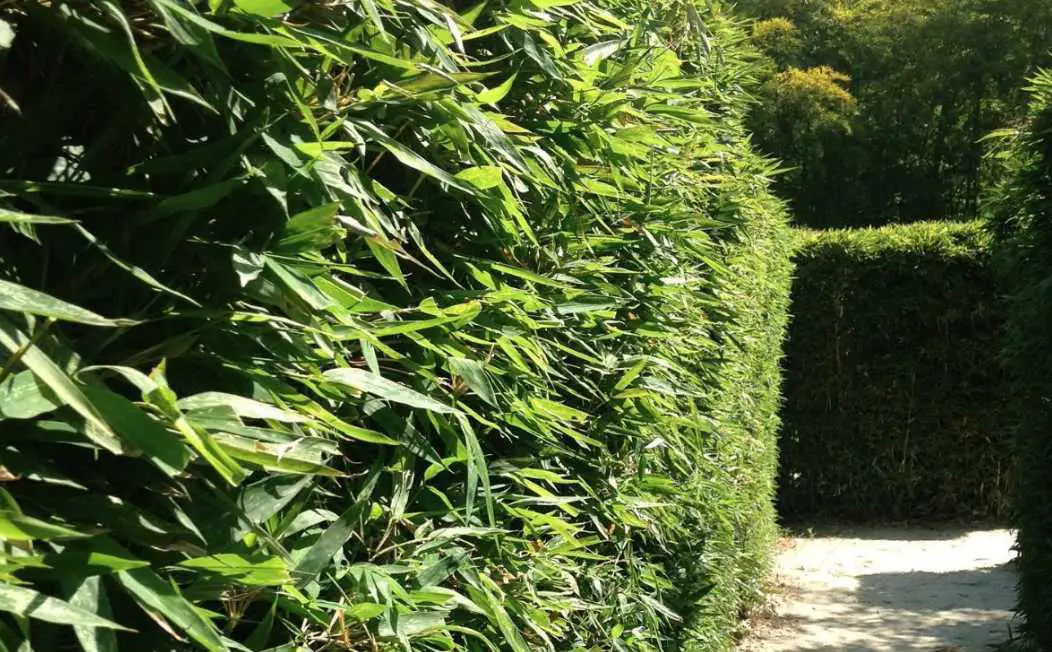
























Would like a recommendation for a clumping type Bamboo to use as a hedge in Texas Zone 7-8. Not a real aggressive species.
Thank you
I would recommend Chusquea culeou. Chusqueas are clumping bamboos from Latin America, and relatively cold hardy. C. culeou has a few subspecies, and any of them should work in your zone. For example ‘Caña Prieta’or ‘Scandens’. Fairly tall and dense, good for a privacy screen.
Hi, looking for a bamboo species that will handle 30 degree celius in summers, exactly 20-25 feet high, clumping, looks nice, and is a good prvacy shield
what would you recommend
What are the winters like? What climate zone are you? Check out our list of clumping bamboos.
Thank you for this informative article. To confirm, in a suburb of Dallas, where I want to grow a line along a fence that goes up to the third floor to screen a neighbor’s window from my pool, you’d recommend Arundinaria funghomii? Do you happen to have a referral where I can pick that up locally? Thanks again.
That’s a good option for native bamboo with slender culms. You might also consider Ph. vivax, which has taller, thicker, elegant culms. Check Lewis Bamboo Nursery for availability.
I live in Savannah Ga. I am wanting to plant a fast growing tall bamboo outside of my fence for privacy from a noisy road. Th area I am planting is partial sun- not full sun at all. What would you recommend? I need dense to help w road noise.
Red Margin Bamboo makes a thick, fast-growing hedge. And it grows well in your climate.
Can you suggest what type of bamboo to use as a privacy hedge in Pittsburgh, PA? We sometimes get temps in the summer around 93 degrees with humidity and in the winter we have snow, ice, and temps can get to 10 below zero.
The area I need the plants for runs about 65 feet and gets a lot of sun during the day and is exposed to wind. I’d like something that is fast growing and dense, and would work in containers too. As to height – a minimum of 6 feet is desired. Thank you.
Hi Bev, Check out our article on growing bamboo in Pennsylvania!
Can bamboo screens or hedges be pruned for height or width?
Yes. See our pruning tips: https://bambubatu.com/pruning-bamboo-restore-your-grasss-grandeur/
Hi,
I live in England where the climate is temperate. We occasionally have lows of 14 degrees and highs of 86, but generally the range is between 40 and 72 fahrenheit. We have a neighbour with a large motorhome and I need a dense hedge that doesn’t spread outwards much and will tolerate a rainy climate, but the soil doesn’t get waterlogged. Which bamboo variety would you suggest please to hide the motorhome?
If you want something cold-hardy and large enough to hide a motorhome, you’ll need to plant a running bamboo like Phyllostachys. I don’t think any clumpers (eg Fargesia) will do the job.